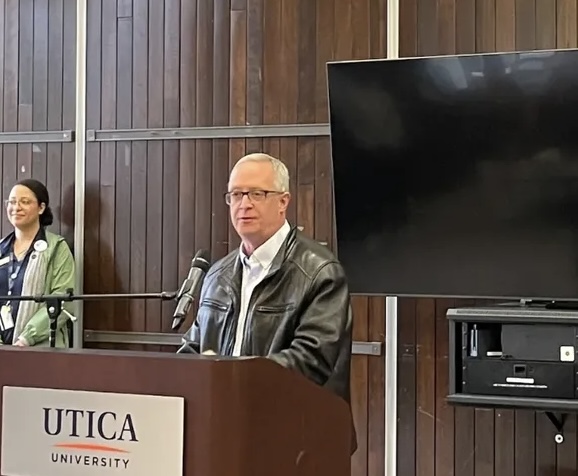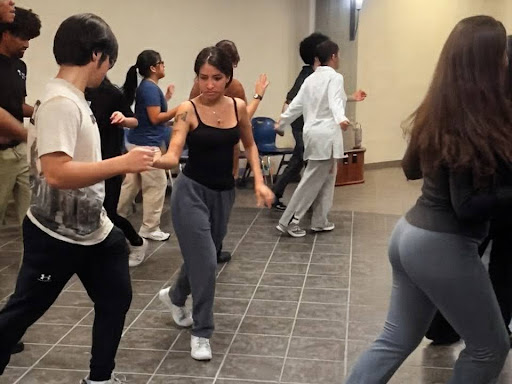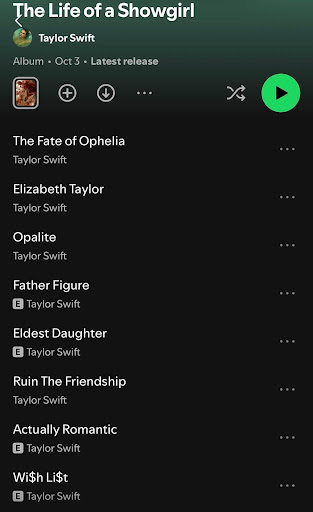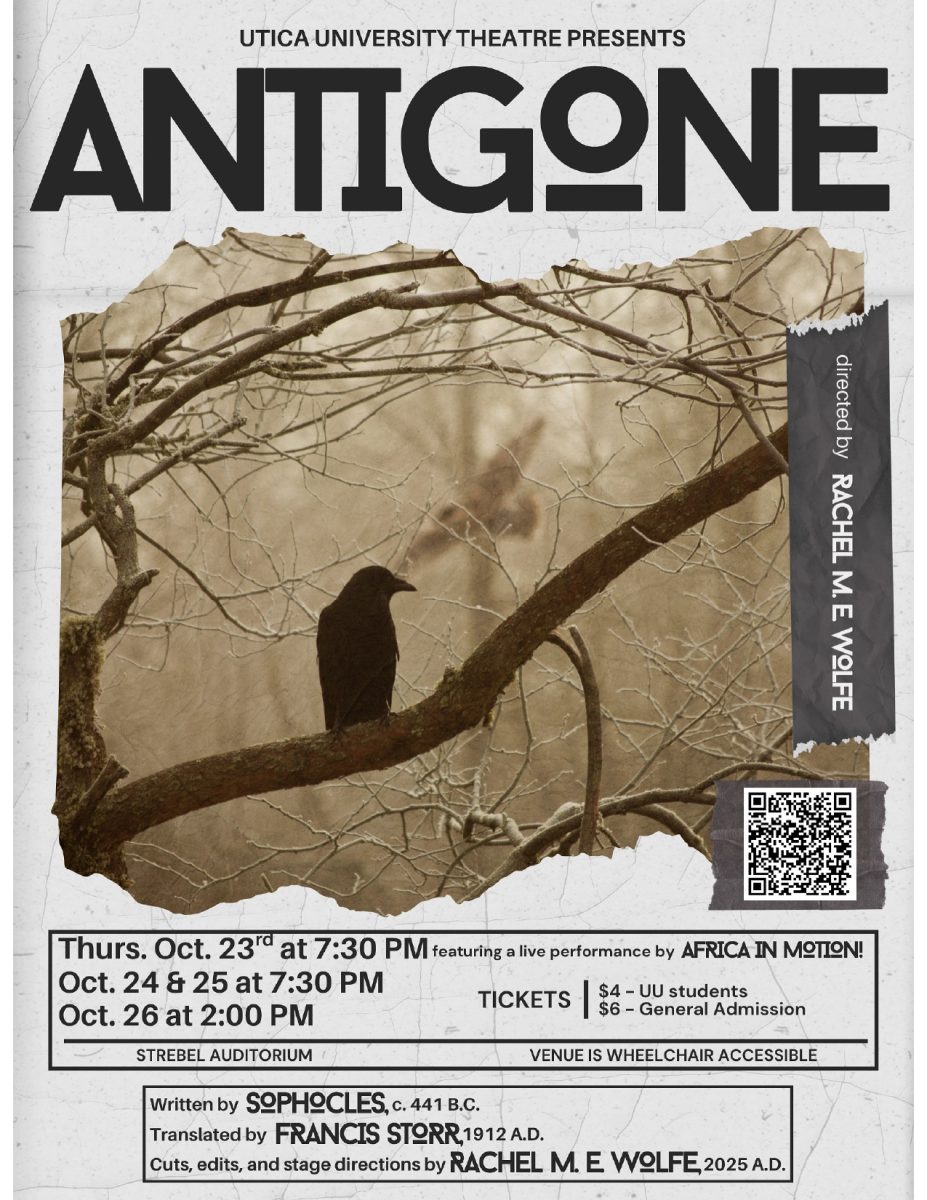The gateway to a serene landscape stands tall on the corner of Culver Avenue, and arched letters spelling out “F.T. Proctor Park” hang suspended overhead. Through this stone-pillared gateway, visitors from the streets of Utica are able to immerse themselves in Frederick T. Proctor Park’s idyllic beauty.
With its expansive green meadow and blooming gardens, national landscape architect Frederick Olmsted Jr. designed the 62-acre parkland in the early 20th century, as well as the other parks that are a part of Utica’s Parkway system.
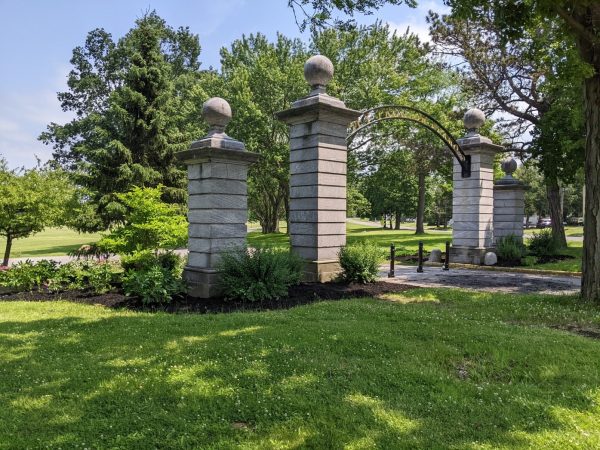
Seeking to improve the parks that Olmsted helped design for Utica, the nonprofit organization, Olmsted City of Greater Utica, was founded in 2021.
“We see ourselves as a civic organization that is involved in trying to improve this community, beginning with improving the quality of life people can enjoy here,” said Philip Bean, local historian and the president and founder of Olmsted City.
Through the work of volunteers, Olmsted City maintains the parks in the Utica Parkway system. The organization aims to bring awareness of Olmsted’s historical impact on the city’s landscape to the people of Utica.
“It’s not just the parks [and] the Parkway system, but there are [also] five neighborhoods in Utica that were designed by Olmsted,” Bean said. “That’s why we call our organization Olmsted City.”
Birth of ‘Olmsted City’
After their father, Olmsted Sr., retired, brothers Frederick Olmsted Jr. and John Olmsted started a national firm that led the way in landscape architecture for over a century.
Their firm, Olmsted Brothers, carried on the legacy of their father. Olmsted Sr. not only co-designed Central Park, but also designed the country’s first parks and parkway system in Boston. Some of the firm’s most notable projects include designing the landscaping for national landmarks such as the Jefferson Memorial, Yosemite National Park and the White House.
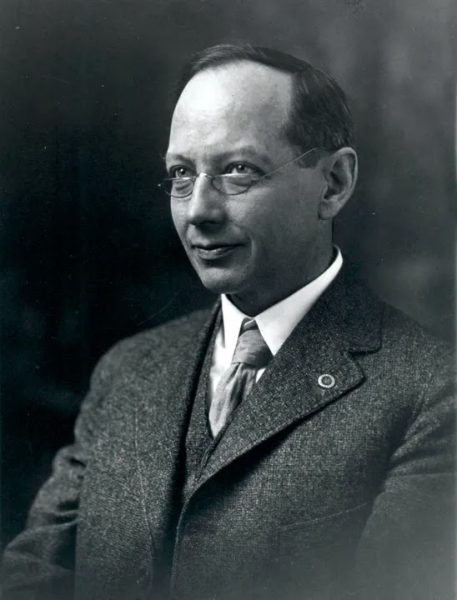
The Olmsted Brothers firm was hired by the Utica Chamber of Commerce in early 1906. Olmsted Jr. mainly collaborated with Thomas R. Proctor, a wealthy local businessman, to create Utica’s first-ever parks and parkway system.
However, most people who live in Utica have never heard of the national architect- despite Olmsted’s extensive work designing the parkway system, Bean said.
Olmsted began working on Utica’s parks and parkway system when he met Thomas R. Proctor in early 1906. For years, Proctor and his family helped enhance various institutions in Utica. In 1899, the Proctor family’s expansion of Utica’s public parkland began.
“[Thomas Proctor] kind of developed a mania for park building,” he said. “In 1897, there were only 7 acres of public parkland and now we have about 680… almost all of that was done by Proctor’s family.”
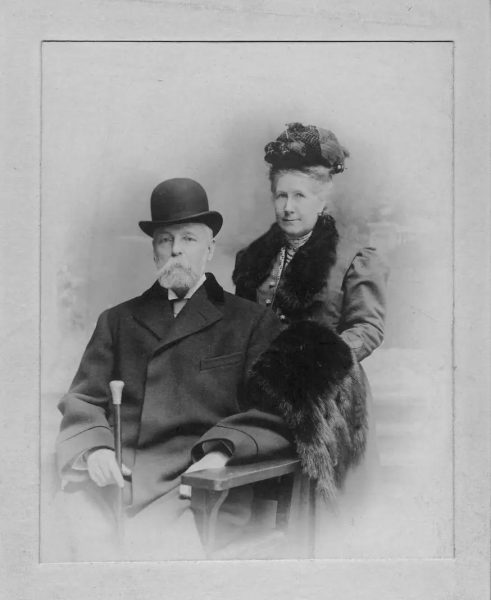
With decades of experience building and managing landscapes, Proctor started by transforming his 112-acre farm into a “gigantic playground” in 1899. Initially called the Children’s Park, it eventually became better known as Thomas R. Proctor Park, Bean said.
After opening the park to the public, Proctor carried forward with his park-building endeavors. Succeeding the development of two smaller parks, Seymour Park and Addison Miller Park, Proctor purchased 360 acres of farmland in South Utica.
“Then [Proctor] thought, because of his previous experience, ‘Well I can do this. I know how to landscape,’ Bean said. “But [Proctor] quickly figured out that he was in way over his head.”
Building Utica’s Parkway system
Designed as a 3-mile boulevard running from west to east through the city of Utica, the Parkway starts from Genesee Street to Welsh Bush Road, and is divided into three parts: The Lower Parkway, Memorial Parkway and Parkway East.
Olmsted’s Parkway ties three Utica parks together: Frederick T. Proctor Park, Thomas R. Proctor Park and Roscoe Conkling Park. These parks, as well as the Parkway itself, are listed on the National Register of Historic Places.
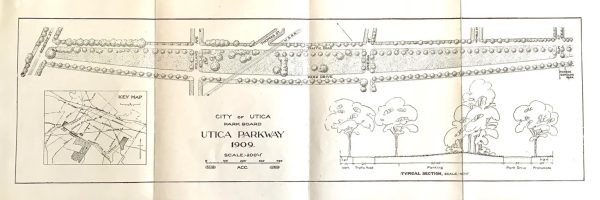

After enlisting Olmsted’s help, the development of the system’s largest park, Roscoe Conkling, began. Covering more than 385 acres, it is one of the first parks to be found along the Memorial Parkway.
From Roscoe Conkling Park, a four-lane boulevard- divided by a tree-lined median- begins in Parkway East. It then narrows down to a two-lane street which leads to F.T. Proctor Park on Culver Avenue.
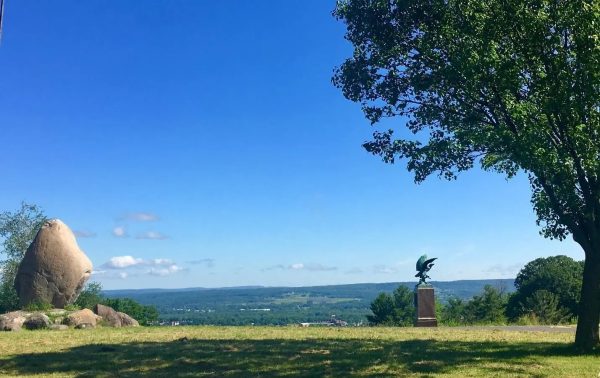
The three parks and the parkway combined cover an area roughly “over 75% the size of Central Park.” Other cities similar to Utica do not have anything like our park system, Bean said.
The city started to build the first part of the Parkway in 1908 and finished the rest of the boulevard in 1909-1919. Prior to the start of its design, it had been something Proctor had been “lobbying” for years. Proctor witnessed the construction of tree-lined boulevard in his hometown of Boston, Commonwealth Avenue, and after seeing “beautiful” tree-lined boulevards in their travels to other cities, Proctor and his wife, Maria Proctor, decided they wanted to bring the same to Utica, Bean said.
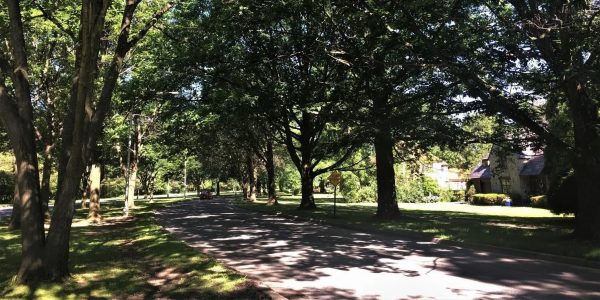
The key to a community’s health & wellbeing
Proctor and his wife both were civic minded, and they were determined to bring “beautiful parks” to the Utica area, he said. The Proctors, as well as both Olmsted Sr. and Olmsted Jr., believed that it was essential for people to be in contact with nature.
“Many of these people had this intuitive sense that spending time in contact with nature was an anecdote for everything that was causing people not to be happy and healthy in urban living,” Bean said.
Spending time in public parks can have a significant impact on urban parkgoers’ mental and physical health. In fact, visitors can experience health benefits merely by sitting on a park bench, he said.
“When public health researchers talk to them, they report that they experience a feeling of an enhanced sense of well-being,” Bean said.
Visiting public parks can also address physical health issues like hypertension and diabetes.
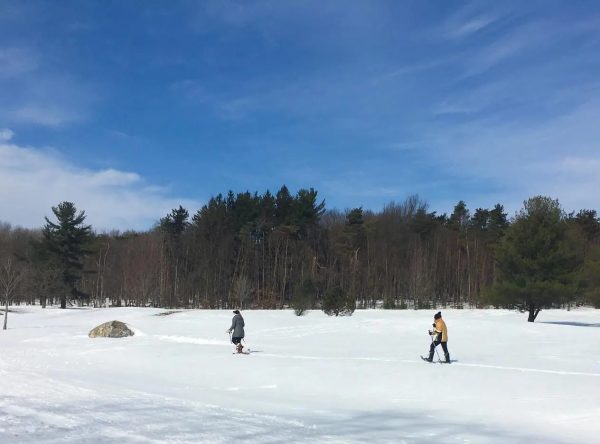
Although experiencing contact with nature can be “therapeutic,” parks that are not in a good state of repair don’t attract as many visitors. There are a lot of people in the city of Utica who have experienced trauma, including refugees, and many have lifestyle illnesses like high blood pressure and diabetes, so it’s important that people are able to spend time in well maintained parks, he said.
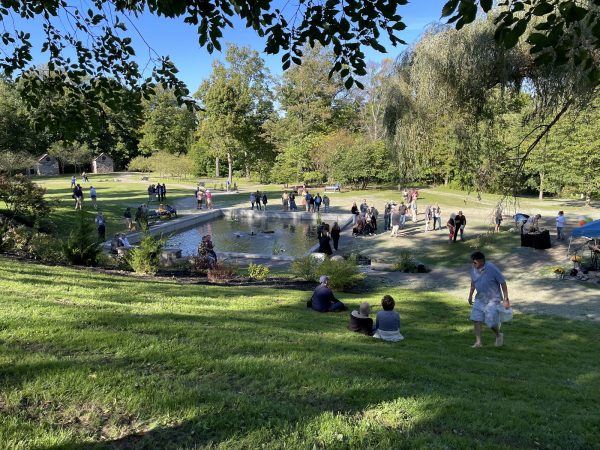
Parks with attractive features for visitors, such as F.T. Proctor Park, are “90% more likely” to draw in parkgoers. These features include walking loops, the Olmsted designed Lily Pond, the ravine stone staircases, and various places to explore within the park, Bean said.
“People are less inclined to go to parks that don’t look enticing,” he said. “That’s what we’re trying to do is make them enticing, make them appealing.”
Upholding the Proctors’ and Olmsted’s mission through community effort
Without the contributions from volunteer organizations such as Olmsted City, the city would “not have enough resources” to maintain the parks to the level they’re at right now. This is due to the fact that there is an extensive amount of parkland to maintain, said Amy Funkhouser, one of the founding members of Olmsted City.
Before founding Olmsted City, Funkhouser was a member of a local gardening club in Utica. She had first met Bean during his time as a volunteer at the Central Park Conservancy in 2020.
“When I started working with Phil, I was helping mostly with garden design, gardening, helping decide what plants should go where, and then how to maintain them and improve the park in sustainable ways,” Funkhouser said.
She currently serves as the vice chair on the board of Olmsted City. When both Bean and Funkhouser founded Olmsted City together, they envisioned getting the community more involved with the maintenance of the parks, and improving the parks through “volunteers and local interest,” she said.
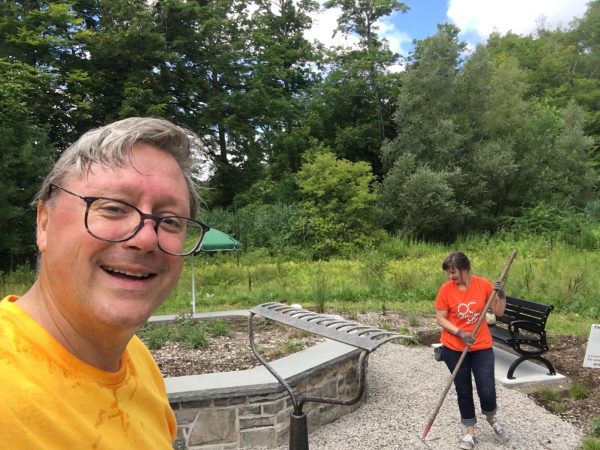
Over the past two years, the organization has worked closely with the commissioner of Utica’s Parks Department, David Short, to conduct restorative projects on the parks- including restoration of Olmsted’s iconic Lily Pond at F.T. Proctor Park.
“We have a great working relationship with him,” Funkhouser said. “We meet monthly with him and discuss projects at the park- both things the city would like to do that we can help them accomplish, and things that we’d like to do that they can help us accomplish.”
Olmsted City, the Parks Department and Public Works collaborate together on their shared vision of improving the parks. Recently, the city built a new pavilion at F.T. Proctor Park, and Olmsted City helped with designing the landscaping. Volunteers from Olmsted City planted new plants, and the city provided them with the materials that they needed, Funkhouser said.
In regards to the maintenance work on the parks, the organization not only receives support from the Parks Department, but they also receive volunteers from local businesses and schools; including volunteers from Utica University’s Pioneer Pitch-In day or the students from the masonry program at MVCC.
On days when they do big planting projects, such as planting trees, they receive an average of 20-30 volunteers to help out. This is a “great number” for projects that they plan for that many volunteers. However, when it comes to the routine maintenance of the parks, the organization receives a smaller number, Funkhouser said.
“Growing the volunteer core was something we were actively trying to do,” she said. “We like it to be something that people enjoy coming out to do as their schedule allows, so having people that just come out once or twice a year… you know we appreciate every hour that every volunteer can give.”
Beautification of Utica’s parks
There have been a number of businesses and organizations from the local area that send out volunteers for multiple days. One organization in particular, BNY Mellon, helped out with some of Olmsted City’s bigger projects, such as planting 120 plants around the Lily Pond restoration project, Bean said.

Photo: Olmsted City of Greater Utica
Olmsted City began carrying out the restoration of F.T. Proctor Park’s Lily Pond and the surrounding landscape in the spring of last year. In order to restore the Lily Pond using Olmsted’s original plans, they needed to raise around $170,000 to cover the project expenses, Bean said.
Along with restoring the Lily Pond, which was “falling apart” before the restoration, they had also made improvements to the park’s other key features. They constructed a new footbridge over the stream that goes through the walking trails, and they’re repairing the staircase that takes parkgoers back to the upper level of the park.

Photo: Olmsted City of Greater Utica
The project also included building a new trail near the Lily Pond to tie together other features of the park.
“We’re improving connectivity within the park so people have all these options,” Bean said. “That’s what makes people want to seek and explore, get to know the place in different ways.”
A lot of hard work, research and time went into making the park a place for people to “enjoy and be proud of,” Funkhouser said. She also found that maintaining the park to the “level it deserves” was rewarding due to the historical significance that the park carries.
“People visiting the park would come up to me and say thank you,” she said. “They were exploring parts of the park that they’ve never explored before, that they didn’t even know were there.”
A legacy to be proud of
That’s why Olmsted City works to bring these kinds of improvements to Utica’s parks; not only because of the health related aspects, but also because it brings a sense of local pride to the community, Bean said.
“If people look at this park and say look at this beautiful park… [and] it’s on the National Register of Historic Places,” he said. “It’d be a point of pride [and the] people of Utica would start talking up their town.”
Olmsted City receives a lot of support from the community, Bean said. Parkgoers will often thank Olmsted City volunteers for their work on the parks, and express how much they appreciate the improvements that have been made.
Recently, the organization received a $338,000 federal grant which will be invested into future projects for the parks, but Olmsted City is “definitely” always looking for more volunteers who are able to help with these projects, Bean said.
“It’s its own reward,” he said. “It really is you know, it’s nice. And that’s what nonprofit organizations should be about. It should be about making the world a better place, and that’s what we’re trying to do.”
Anyone interested in volunteering for Olmsted City of Greater Utica or would like to join their mailing list should email [email protected], or visit OlmstedCity.org. The organization is also on Facebook at Olmsted City of Greater Utica Incorporated.


